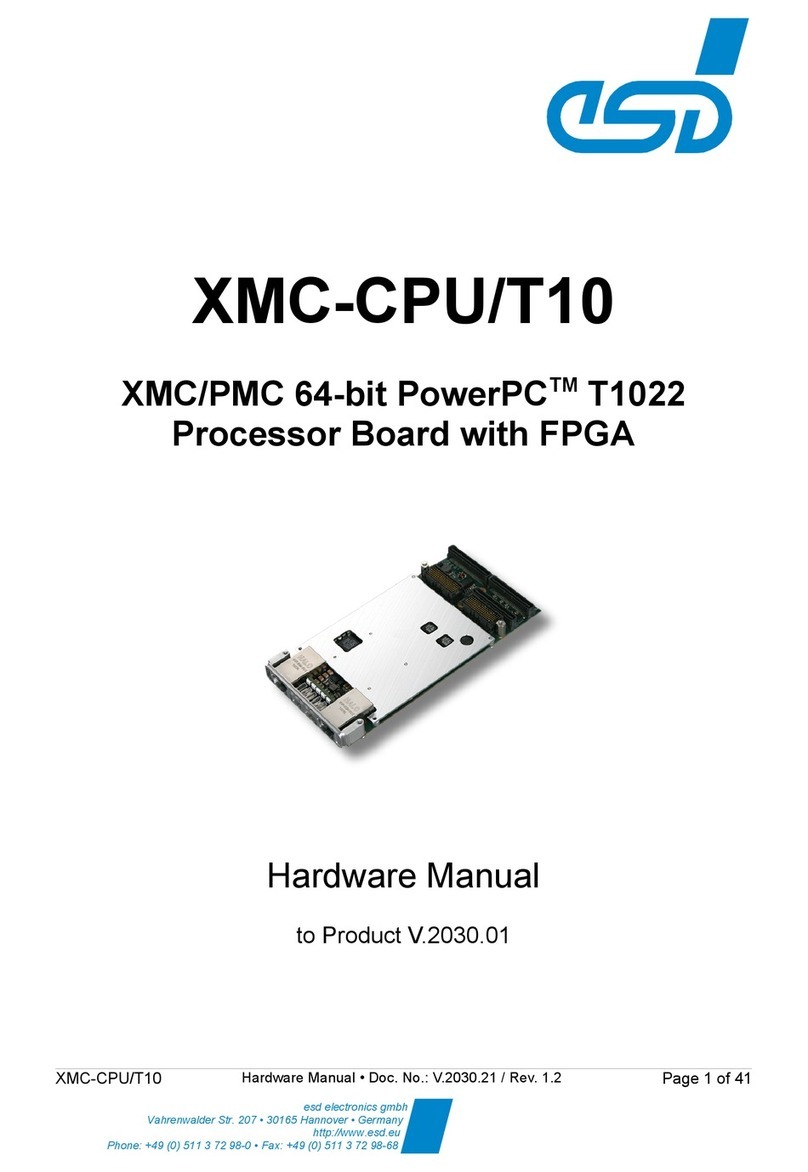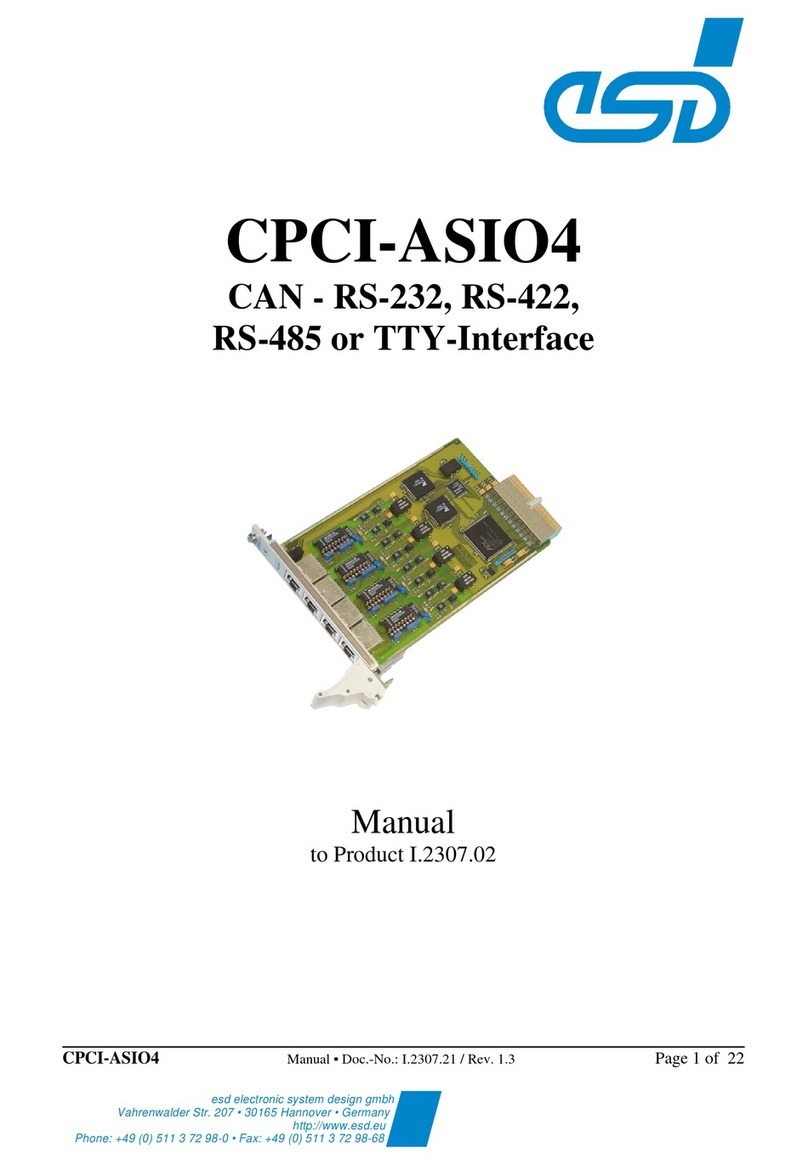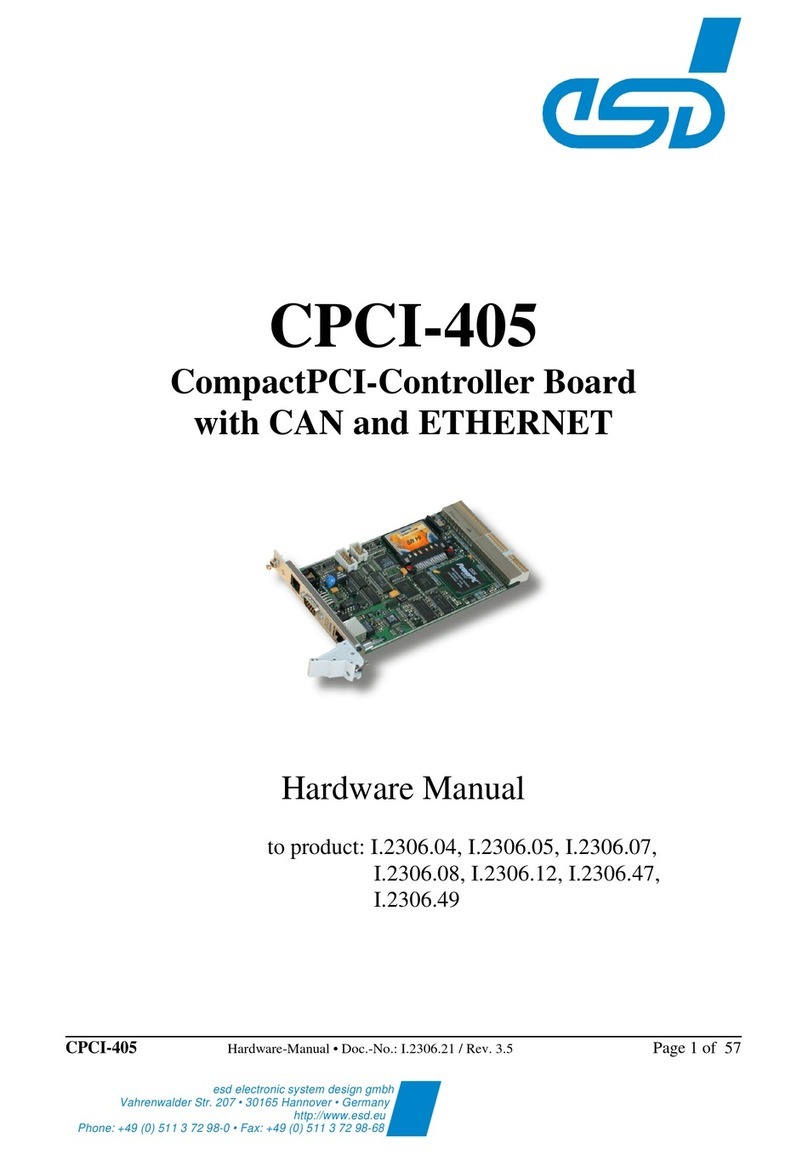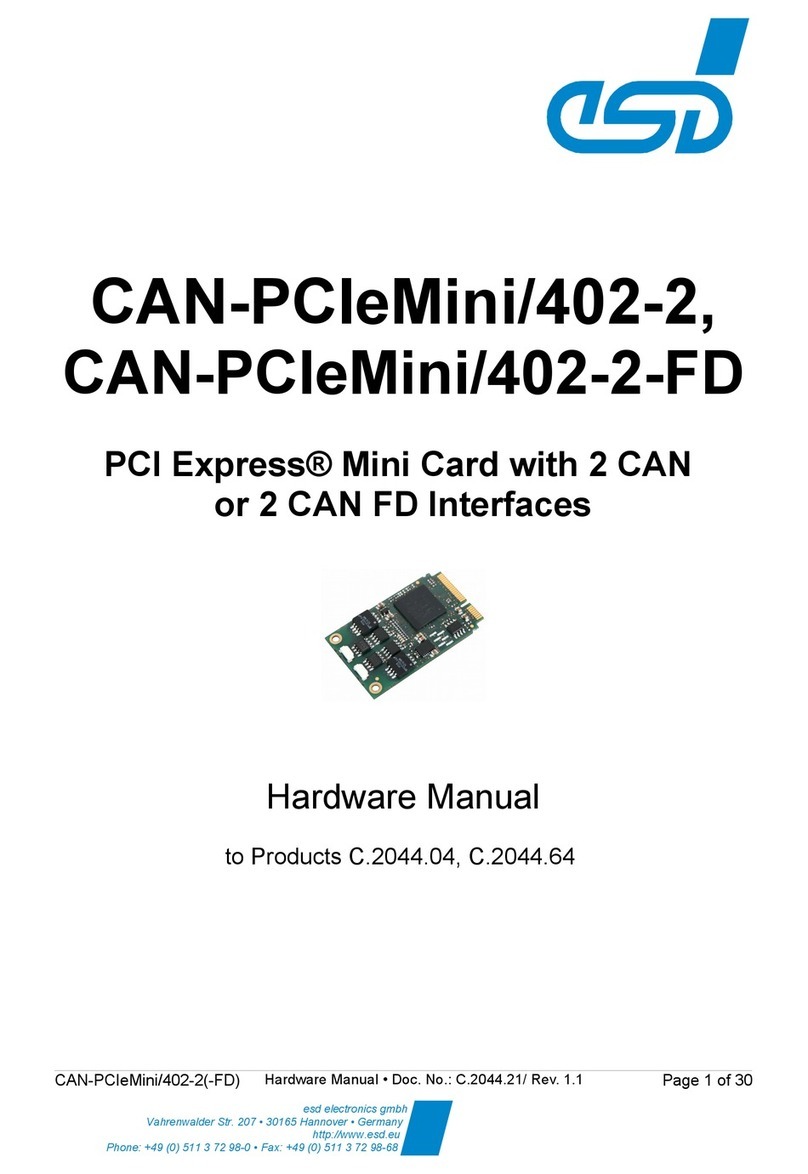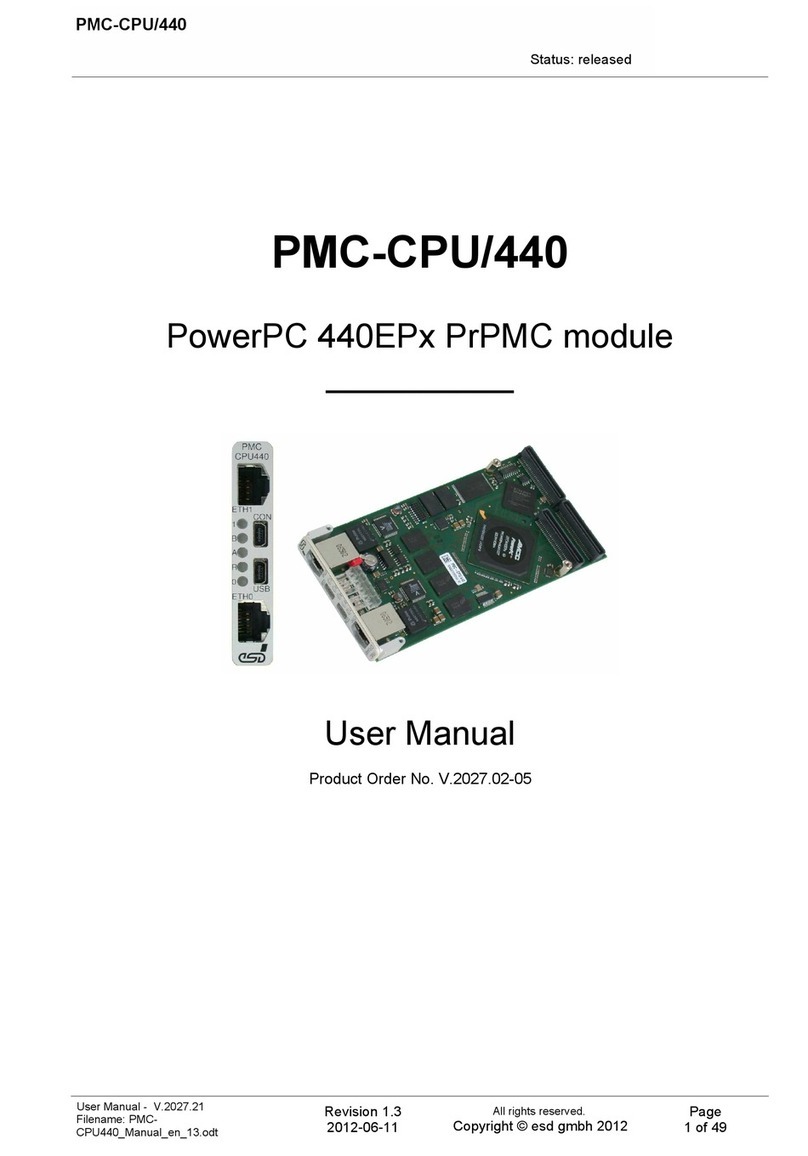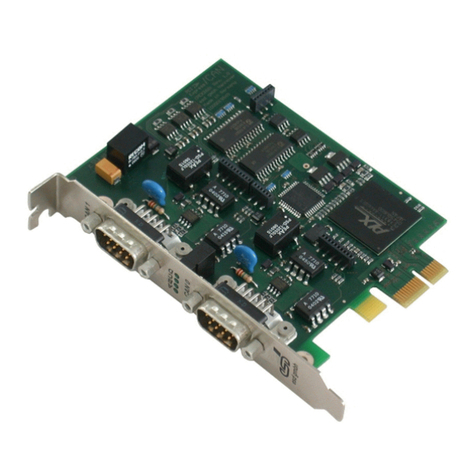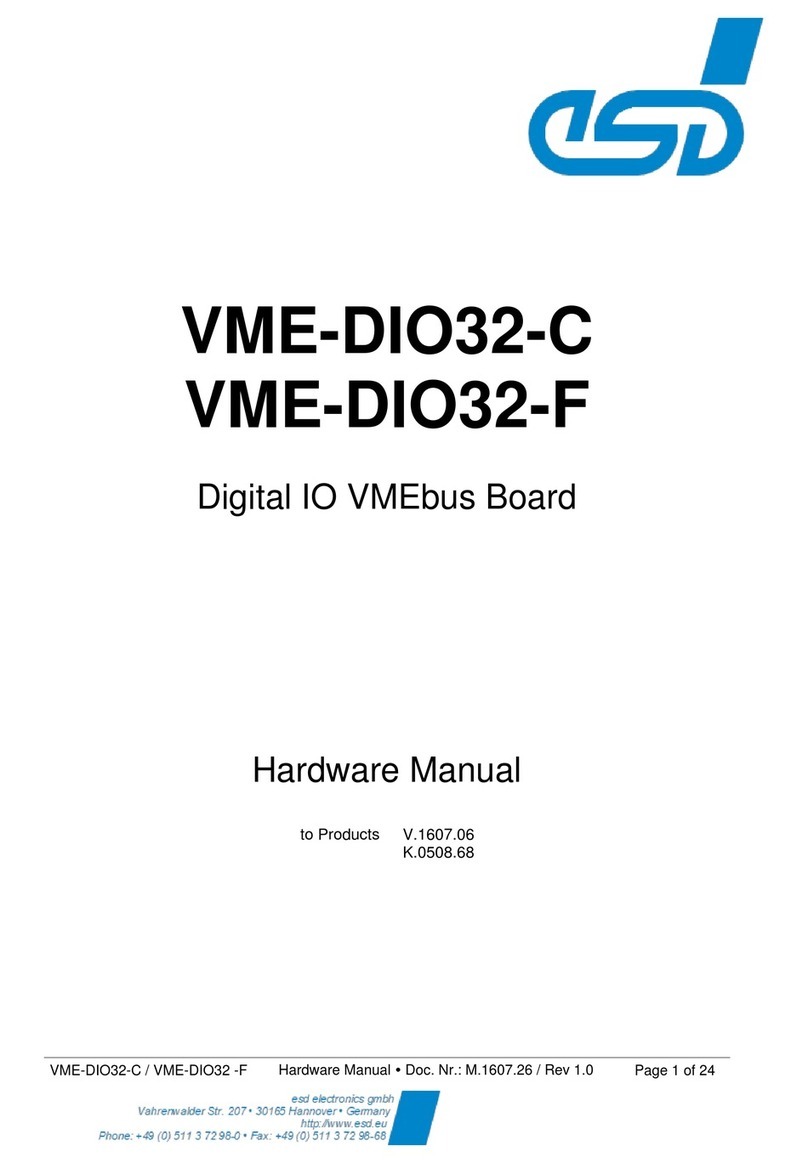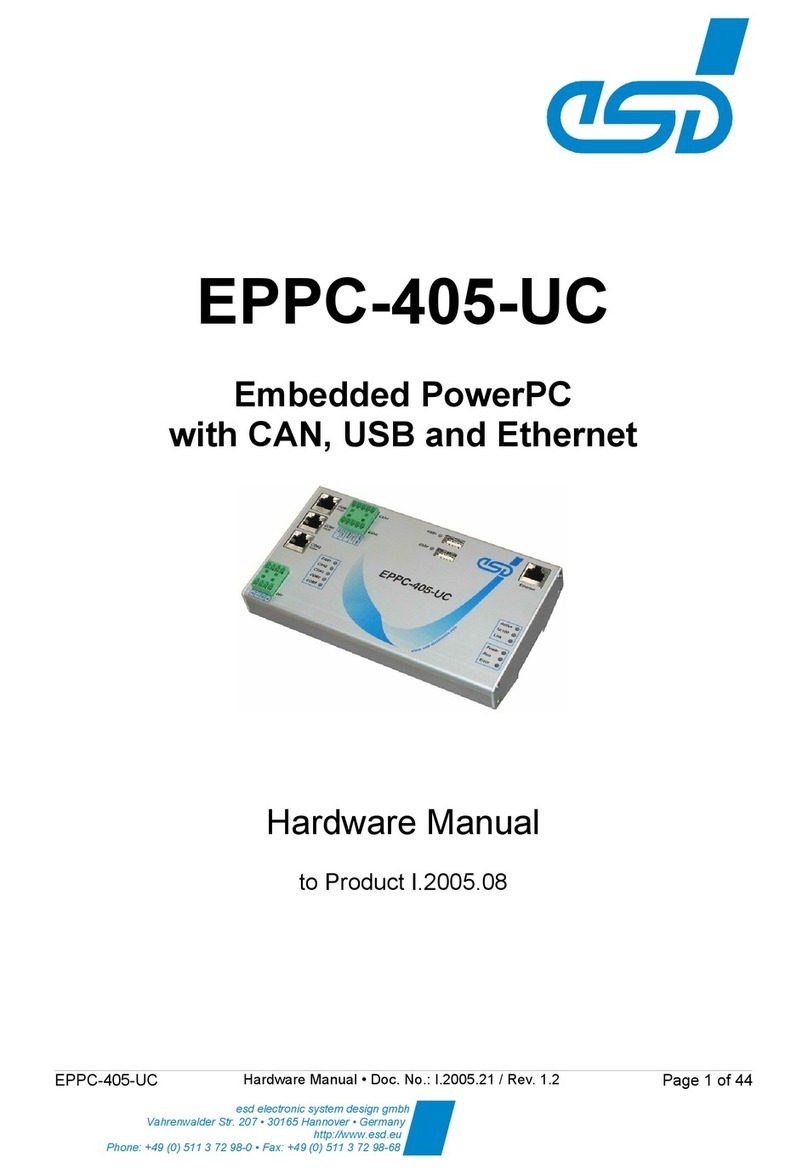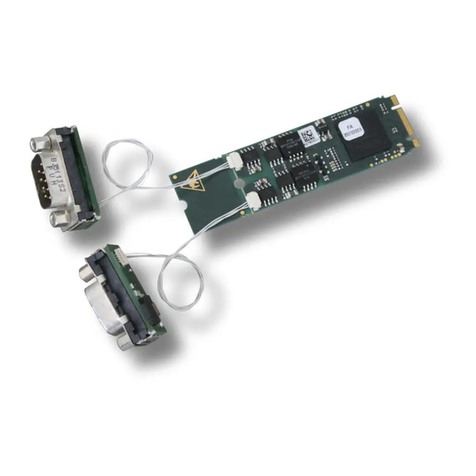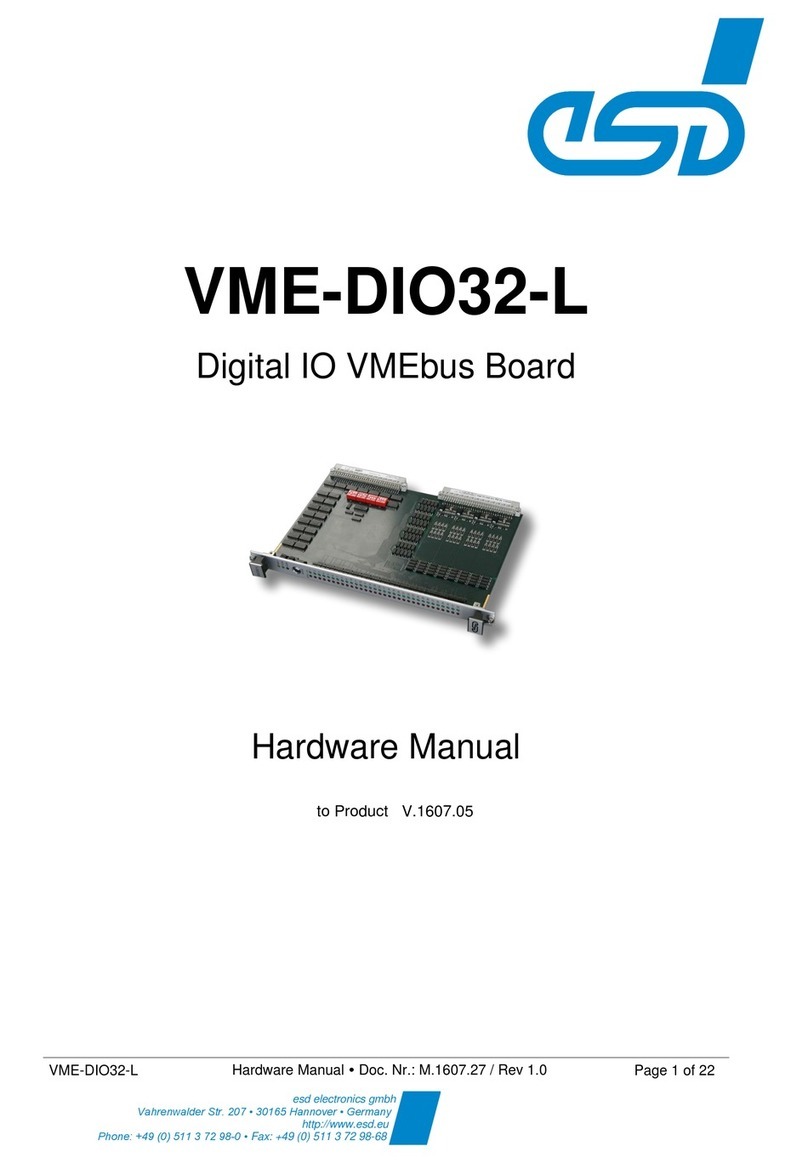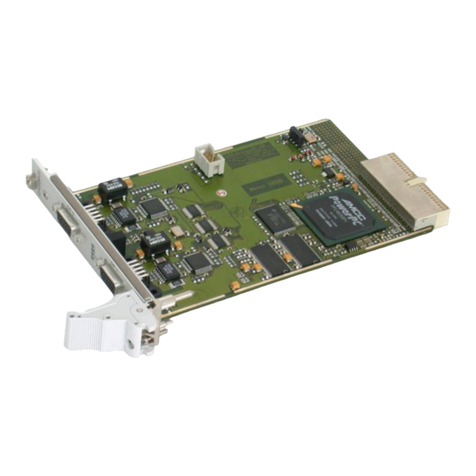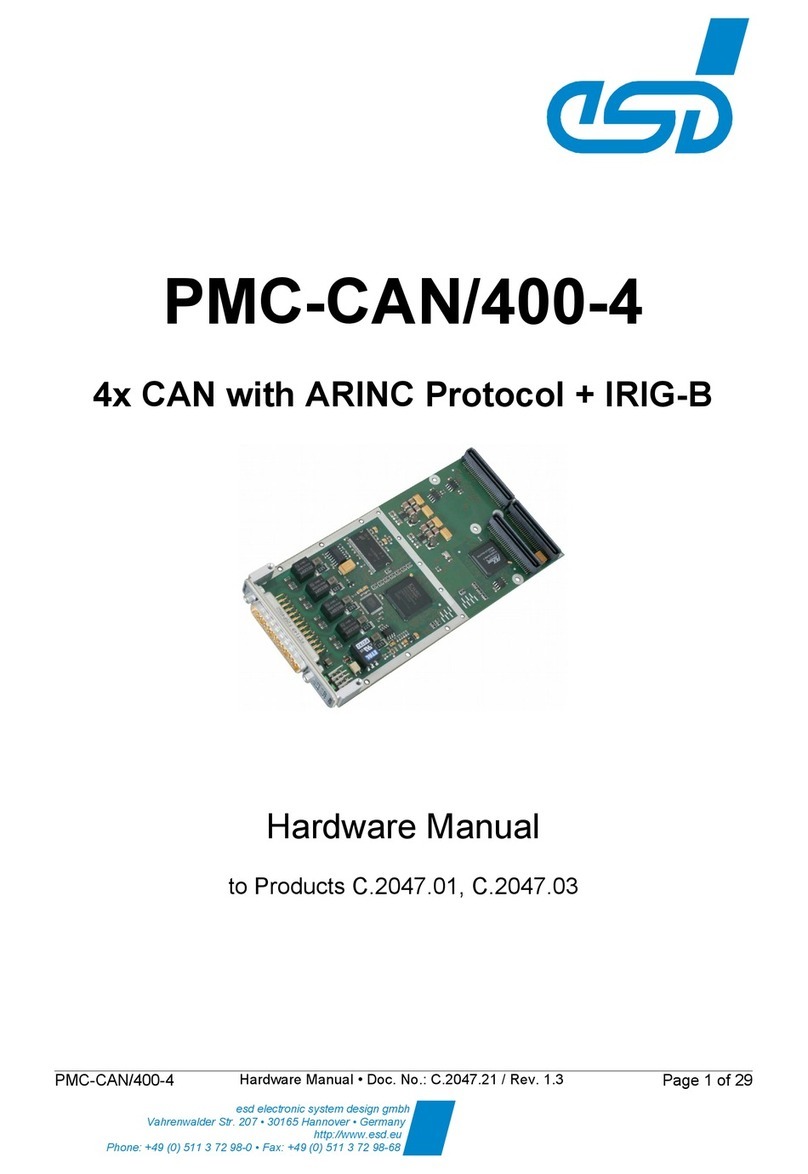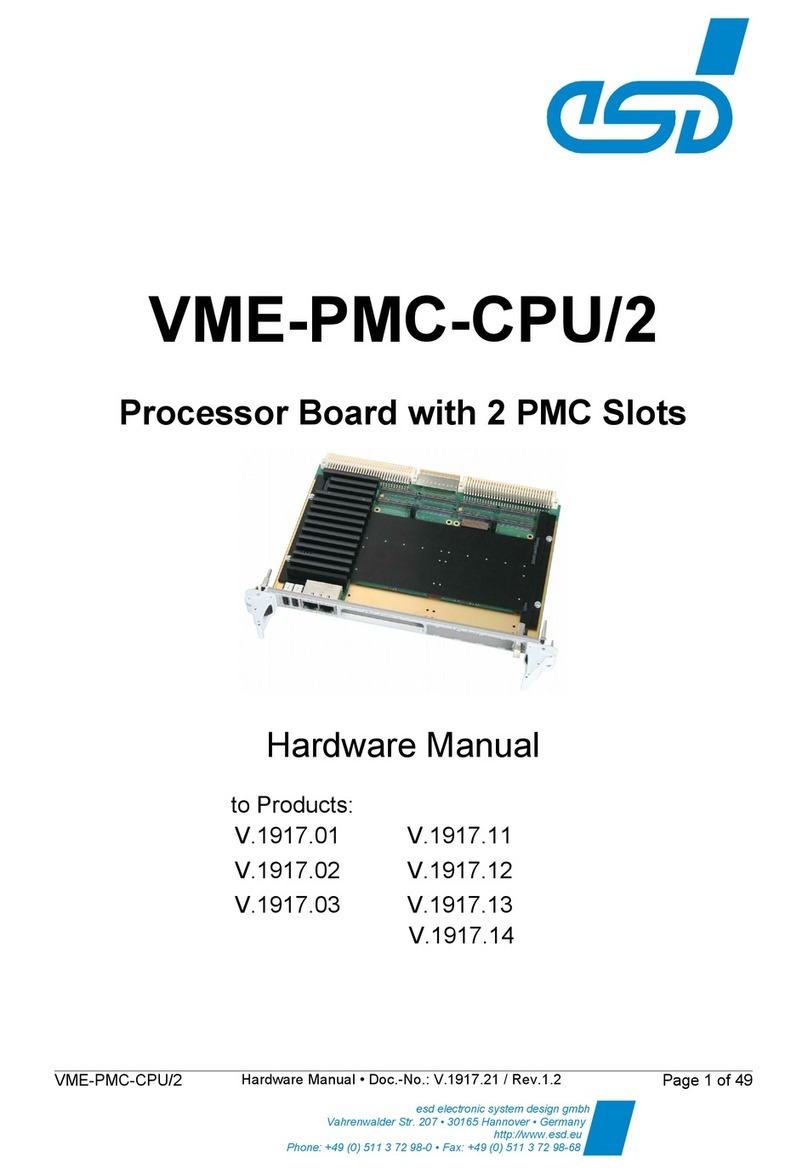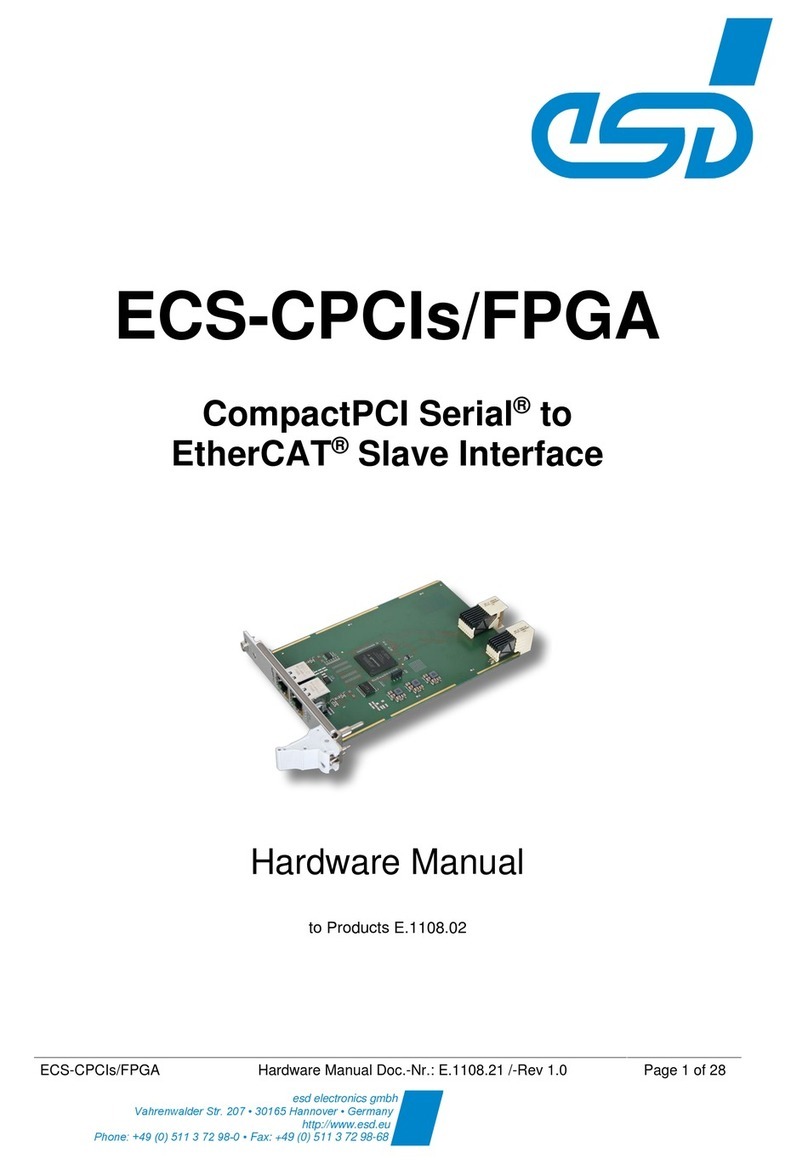Table of contents
Safety Instructions...........................................................................................................................5
1. Overview......................................................................................................................................9
1.1 About this Manual..................................................................................................................9
1.2 Overview of available Hardware Versions..............................................................................9
1.3 Description...........................................................................................................................11
1.3.1 Classical CAN..............................................................................................................11
1.3.2 CAN FD.......................................................................................................................11
1.3.3 General Properties......................................................................................................12
1.3.4 Customized Options....................................................................................................13
2. PCB View with Connectors and Jumpers...................................................................................14
2.1 CAN-PCI 402-2(-FD)............................................................................................................14
2.2 CAN-PCI 402-1....................................................................................................................14
2.3 CAN-PCI 402-4 2-Slot View.................................................................................................15
3. Jumper Configuration.................................................................................................................16
3.1 CAN Termination .................................................................................................................16
4. Hardware Installation..................................................................................................................17
5. Front Panel View with LED-Display............................................................................................19
5.1 CAN-PCI 402-2(-FD) LEDs..................................................................................................19
5.2 Additional LEDs on CAN-PCIe 402-Slot2 Adapter Board.....................................................20
6. Technical Data............................................................................................................................21
6.1 General Technical Data........................................................................................................21
6.2 PCI Interface........................................................................................................................21
6.3 Classical CAN Interfaces ....................................................................................................22
6.4 CAN FD Interface (CAN-PCI 402-2-FD only).......................................................................22
6.5 Message-Signalled Interrupt Handling.................................................................................23
6.6 Software Support.................................................................................................................23
6.6.1 CAN-PCI 402 Classical CAN Versions........................................................................23
6.6.2 CAN-PCI 402-2-FD ....................................................................................................23
6.6.3 CAN Tools...................................................................................................................24
7. Connector Assignments..............................................................................................................25
7.1 CAN.....................................................................................................................................25
8. Correct Wiring of Electrically Isolated CAN Networks.................................................................26
8.1 Standards concerning CAN Wiring......................................................................................26
8.2 Light Industrial Environment (Single Twisted Pair Cable).....................................................27
8.2.1 General Rules.............................................................................................................27
8.2.2 Cabling........................................................................................................................28
8.2.3 Branching....................................................................................................................28
8.2.4 Termination..................................................................................................................28
8.3 Heavy Industrial Environment (Double Twisted Pair Cable).................................................29
8.3.1 General Rules.............................................................................................................29
8.3.2 Device Cabling............................................................................................................30
8.3.3 Branching....................................................................................................................30
8.3.4 Termination..................................................................................................................30
8.4 Electrical Grounding.............................................................................................................31
8.5 Bus Length...........................................................................................................................31
8.6 Examples for CAN Cables...................................................................................................32
8.6.1 Cable for light industrial Environment Applications (Two-Wire)....................................32
8.6.2 Cable for heavy industrial Environment Applications (Four-Wire)................................32
9. CAN Troubleshooting Guide.......................................................................................................33
9.1 Termination..........................................................................................................................33
CAN-PCI 402 Hardware Manual • Doc. No.: C.2049.21 Rev. 1.5 Page 7 of 43
